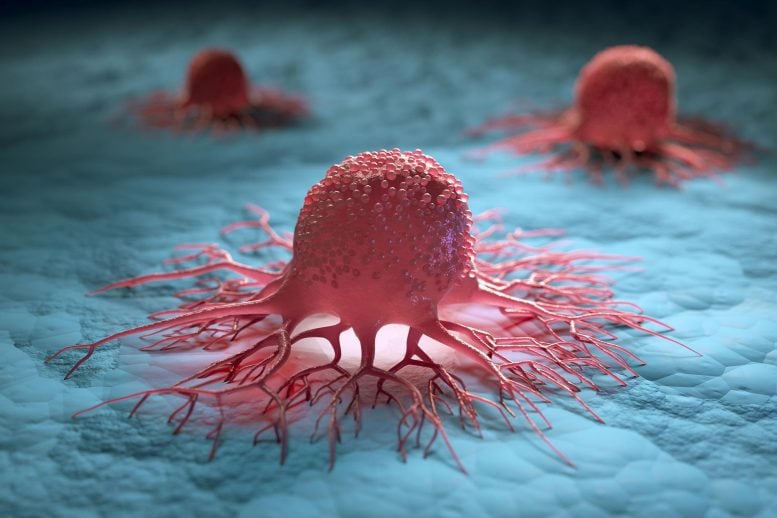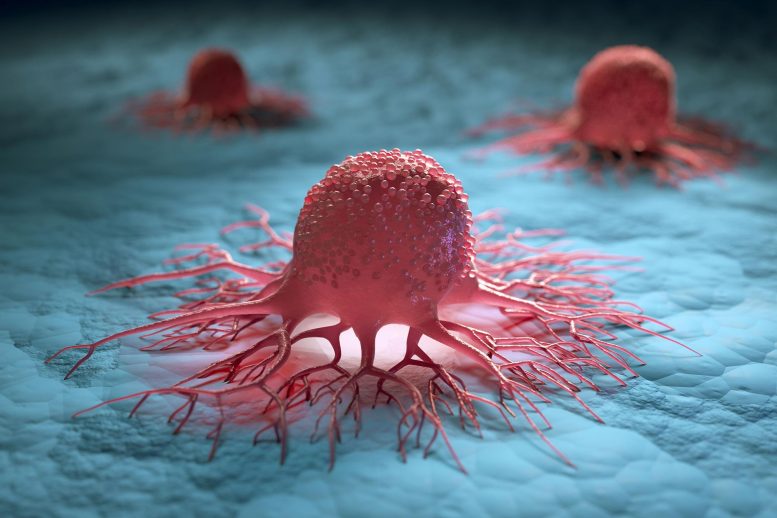

Endocrine disruptors are chemicals that can interfere with hormone systems at certain doses, affecting bodily functions and health. Commonly found in pesticides, plastics, cosmetics, and industrial chemicals, they infiltrate our daily lives through products like packaged foods, personal care items, and household cleaners.
A study published in the journal Environmental Health Perspectives involving the University of Granada (UGR), IDIBELL, the Catalan Institute of Oncology, and the Biohealth Research Institute in Granada (ibs.GRANADA) has found a connection between environmental pollutants and endometrial cancer. This collaborative research included contributions from experts at Bellvitge University Hospital and the Biomedical Research Networking Center for Epidemiology and Public Health (CIBERESP).
Endometrial cancer is a type of tumor that develops on the inner lining of the uterus. It accounts for more than 5,000 new cases of cancer in Spain each year and has a major impact on women’s health. Moreover, the incidence of this type of cancer is increasing, partly due to population ageing. As it is a hormone-dependent cancer, estrogens can play a role in its development and progression.
Study Focus and Methodology
The study examined the relationship between endometrial cancer and exposure to mixtures of environmental pollutants that can disrupt hormone function. This class of chemicals, also known as endocrine disruptors, act as xenoestrogens and are found in many industrial products, including pesticides and herbicides, as well as in cosmetics and other everyday consumer products.
Using advanced chemical analysis techniques and biological testing, the researchers assessed the total hormonal burden in the blood of more than 300 women with and without endometrial cancer. “The use of these biological tests helps us understand the negative impact of chemical mixtures,” explains Marieta Fernández, a UGR professor and researcher at the Biohealth Research Institute in Granada (ibs.GRANADA) and CIBERESP.
The results show a link between exposure to endocrine disruptors and an increased risk of developing endometrial cancer. “Interestingly, we saw the effect with moderate doses of xenoestrogens, but not with high doses, similar to what was observed with endogenous hormones,” adds Laura Costas, a researcher at IDIBELL and the Catalan Institute of Oncology.
“Since this is a hormone-dependent cancer, this relationship is probably linked to the nature of the tumor itself. Therefore, we also want to study whether the presence of xenoestrogens leads to a worse pathological evolution in women who already have the disease,” says Costas, who is also a researcher at CIBERESP.
The research sheds light on the negative impact of endocrine disruptors on human health and has significant implications for public health. It also highlights the need to consider the combined effects of chemical mixtures when assessing environmental risk.
Reference: “Total Effective Xenoestrogen Burden in Serum Samples and Risk of Endometrial Cancer in the Spanish Screenwide Case–Control Study” by Laura Costas, Jon Frias-Gomez, Francisco M. Peinado, Jose Manuel Molina-Molina, Paula Peremiquel-Trillas, Sonia Paytubi, Marta Crous-Bou, Javier de Francisco, Victor Caño, Yolanda Benavente, Beatriz Pelegrina, José Manuel Martínez, Marta Pineda, Joan Brunet, Xavier Matias-Guiu, Silvia de Sanjosé, Jordi Ponce, Nicolás Olea, Laia Alemany and Mariana F. Fernández, 28 February 2024, Environmental Health Perspectives.
DOI: 10.1289/EHP13202

